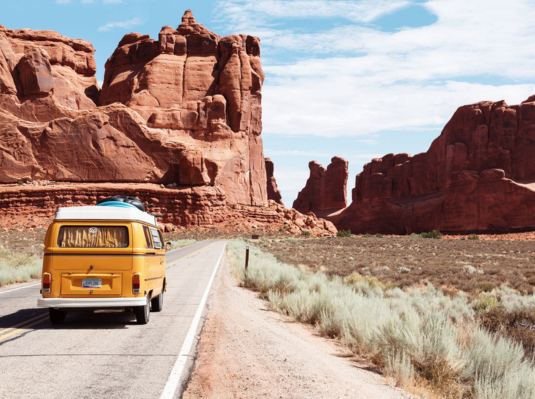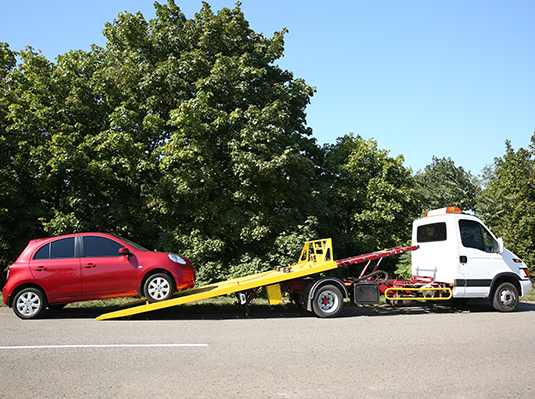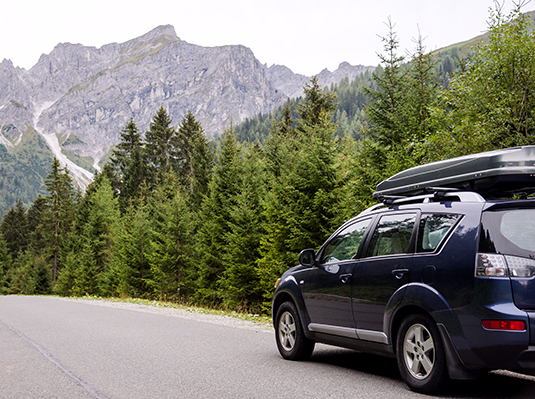
Key Takeaways
-
Once you have the fun parts of your trip planned, think about details like reading the fine print of your insurance policy and understanding if you need to purchase additional coverage like roadside assistance.
-
Take your car for a tune-up if possible before your trip, or manually check your tire pressure and oil.
-
Pack an emergency kit that accounts for a possible break-down. Include emergency numbers and documentation.
Start planning as soon as possible.
Once you have the main details of your trip set—where you’re going, when you’ll drive, and who you’ll be going with—it’s time to start planning everything else. Figure out some of the biggest details like driving routes and rest stops first, and then continue to solve for all the other problems you might face so you’re not surprised or unprepared the day you’re set to drive.
Solidify your route and backup plan.
When you’ve chosen your route, plan out where you’ll stop for gas and rest. Always stop for gas before a long, open section of the drive, even if your tank is three-quarters of the way full. On the days leading up to your trip and each morning of your drive, check your phone for inclement weather. You should have buffer time built into you trip in case you get delayed, as well as a back-up plan with a new route to accommodate bad weather.
Check your coverage.
If you don’t already know the ins and outs of your car insurance policy, now is the time to review your coverage. It’s best practice to have collision and comprehensive insurance coverage.
Collision coverage will help pay for damage to your car when you are at fault in an accident, if you hit a stationary object or pothole, or if you roll your vehicle.
Comprehensive coverage will pay for non-accident damages to your car like theft, vandalism, fire, falling objects, rocks, hail, and animals hitting your car. Comprehensive coverage also includes glass and windshield damage, but many companies have additional deductibles for replacing glass or repairing a windshield, so it is important to work with an insurance expert to make sure you understand your comprehensive coverage and how it applies to glass and windshield claims.
You’ll also need to know how your insurance works out of state and when you can let your licensed friends and family members drive your car on a road trip. In general, the terms of your car insurance policy will follow you across state lines, but it’s best to ask your insurance company or agent to confirm there are no rules you need to be aware of in the states you’ll be driving to. For co-drivers, understand who has “permissive use” on your policy, or in other words, who you can give permission to drive your car. You can give permissive use to a friend or family member who does not live with you and carries their own car insurance; however, you can’t give permissive use to someone who lives in the same household without first including them on your policy.
Get your car in shape.
You wouldn’t run a marathon without first making sure you’re in perfect health, so apply the same philosophy to your car for a road trip. If you have any ongoing maintenance issues, try to correct those so you have a better chance of making it through your trip without any issues.
Carry the essentials.
If you have an emergency kit in your car, ensure the items are restocked and in working condition. If you don’t carry an emergency kit in your car, now’s the perfect time to establish one as you’re planning for your road trip. To start, the following are some useful items to think about including in your kit:
-
Physical maps or an atlas
-
Device chargers
-
Cash
-
Fully stocked first aid kit
-
Jumper cables
-
Air pump
-
Spare tire and tire repair kit
-
Extra water
-
Blanket
-
Flashlight
-
Reflective vest
-
Small tools like a screwdriver and pliers
In addition, you should also ensure important documentation is in your wallet, purse, or glovebox, including your driver’s license, your most up-to-date vehicle registration, and your car insurance documents.
Know the numbers to call in an emergency.
If your insurance policy or your car manufacturer offers roadside assistance, write down or print out the details and phone numbers in case your car breaks down during your road trip. If you call roadside assistance during your trip, the nearest service provider will be dispatched to you for help. You may also find that your cell phone provider, credit card, or auto clubs (like AAA) can provide roadside assistance. Exhaust your options and be prepared with a list of numbers to call. If you find yourself broken down on the side of the road with no roadside assistance, you’ll likely need to call a tow truck or mechanic yourself, which can get costly.
A little planning can go a long way in the case of a breakdown or emergency, so make sure you’re creating checklists and reading up on your car insurance policies to ensure you’ve got the right coverage. Get a quote or reach out to your agent to review your policy to increase your chance for a successful trip.
The contents of this article are for informational purposes only. You should not act or refrain from acting based on this information without first consulting a Goosehead licensed agent at service@goosehead.com. We disclaim all liability for actions taken or not taken by you based on the contents of this article which is provided "as is." Goosehead makes no representation that this content is error-free.
Get a Quote


